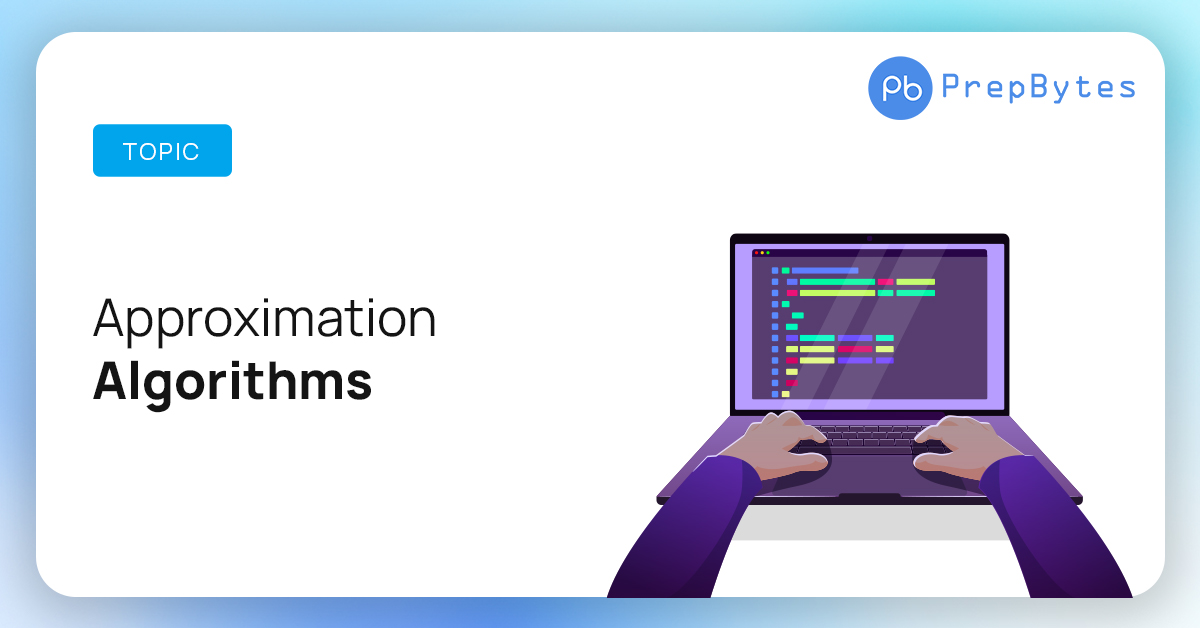Last Updated on June 29, 2023 by Mayank Dham

An Approximate Algorithm is a method of approaching the optimization problem’s NP-COMPLETENESS. This method does not ensure the best solution. The goal of an approximation algorithm is to get as close to the optimum value as possible in a reasonable amount of time, which is at most polynomial time. Approximation algorithms and heuristic algorithms are examples of such algorithms.
Understanding Approximation Algorithms
Approximation algorithms are algorithms designed to find near-optimal solutions for optimization problems in a computationally efficient manner. These problems typically involve seeking the best solution among a vast number of possibilities, where finding the exact optimal solution is impractical or requires prohibitively long computation times.
Performance Ratios
Assume we are working on an optimization problem where each solution has a cost. A legal solution is returned by an Approximate Algorithm, but the cost of that legal solution may not be optimal.
For Example, suppose we are considering a minimum size vertex-cover (VC). An approximate algorithm returns a VC for us, but the size (cost) may not be minimized.
Another example would be a maximum size Independent set (IS). An approximate Algorithm returns an IS for us, but the size (cost) may be less than optimal. Let C be the cost of an approximate algorithm’s solution, and C* be the cost of the optimal solution. For an input size n, we say the approximate algorithm has an approximate ratio P (n), where

The approximation ratio intuitively measures how well the approximate answer differs from the optimal solution. A big (small) approximation ratio indicates that the answer is significantly poorer than (or roughly equal to) an ideal solution. Because P (n) is always one, we can write P if the ratio does not rely on n. As a result, a 1-approximation algorithm yields the best solution. Some issues have polynomial-time approximation methods with modest constant approximate ratios, whilst others have well-known polynomial time approximation algorithms with approximate ratios that rise with n.
Key Features of Approximation Algorithms
1. Performance Guarantees: Approximation algorithms provide performance guarantees that quantify the quality of their solutions. These guarantees are expressed as approximation ratios or bounds, specifying how close the algorithm’s solution is to the optimal solution.
2. Polynomial Time Complexity: Approximation algorithms focus on providing efficient solutions within polynomial time complexity. They trade-off optimality for efficiency, allowing them to handle large-scale problems that would otherwise be intractable.
3. Problem-Specific Approaches: Different approximation algorithms employ problem-specific techniques and heuristics based on the nature of the optimization problem. These techniques exploit specific properties of the problem to find near-optimal solutions efficiently.
Applications of Approximation Algorithms
Approximation algorithms find applications across various fields and domains. Some notable examples include:
1. Network Design: Approximation algorithms are used to solve problems like minimum spanning trees, facility location, and network connectivity. These algorithms enable efficient planning and optimization of network infrastructure.
2. Scheduling and Load Balancing: Approximation algorithms are employed to schedule tasks, allocate resources, and balance loads in systems such as data centers and cloud computing. They ensure efficient utilization of resources while providing an acceptable quality of service.
3. Traveling Salesman Problem: The traveling salesman problem, a classic optimization problem, seeks to find the shortest possible route to visit a set of cities. Approximation algorithms provide solutions that are within a factor of the optimal solution, enabling efficient route planning and logistics optimization.
4. Bin Packing Problem: In situations where items of different sizes need to be packed into a limited number of bins, approximation algorithms offer efficient approaches for achieving near-optimal packing strategies. This has applications in logistics, inventory management, and resource allocation.
Conclusion
Approximation algorithms bridge the gap between the desire for optimal solutions and the limitations of computational resources. By sacrificing optimality in favor of efficiency, these algorithms provide near-optimal solutions within reasonable computation times. With their performance guarantees and problem-specific techniques, approximation algorithms find applications in diverse fields, enabling efficient optimization in complex scenarios. As the boundaries of computational feasibility continue to expand, approximation algorithms play a vital role in addressing optimization challenges across numerous domains.
Frequently Asked Questions (FAQs)
Q1. What is the main difference between exact algorithms and approximation algorithms?
Exact algorithms aim to find the optimal solution to a problem, guaranteeing the best possible result. On the other hand, approximation algorithms focus on providing near-optimal solutions within polynomial time, allowing for efficient solutions to complex problems.
Q2. How do approximation algorithms guarantee the quality of their solutions?
Approximation algorithms provide performance guarantees in the form of approximation ratios or bounds. These guarantees specify how close the algorithm’s solution is to the optimal solution. For example, an approximation algorithm may guarantee a solution within a factor of 2 of the optimal solution.
Q3. Are approximation algorithms always efficient in terms of time complexity?
Yes, one of the key characteristics of approximation algorithms is their ability to provide solutions within polynomial time complexity. This efficiency allows them to handle large-scale problems that would be intractable for exact algorithms, although the efficiency may come at the cost of sacrificing optimality.
Q4. Can approximation algorithms provide solutions that are arbitrarily close to the optimal solution?
No, approximation algorithms typically provide solutions that are within a certain factor or bound of the optimal solution. The specific approximation ratio depends on the problem and the algorithm used. While the solutions are not always optimal, they are still deemed acceptable and useful in practice.
Q5. Are there any optimization problems where approximation algorithms consistently provide optimal solutions?
In general, approximation algorithms do not guarantee optimal solutions. However, there are some special cases where an approximation algorithm can provide the exact optimal solution. These cases typically arise when the problem has a specific structure or satisfies particular conditions that allow for an optimal approximation.


